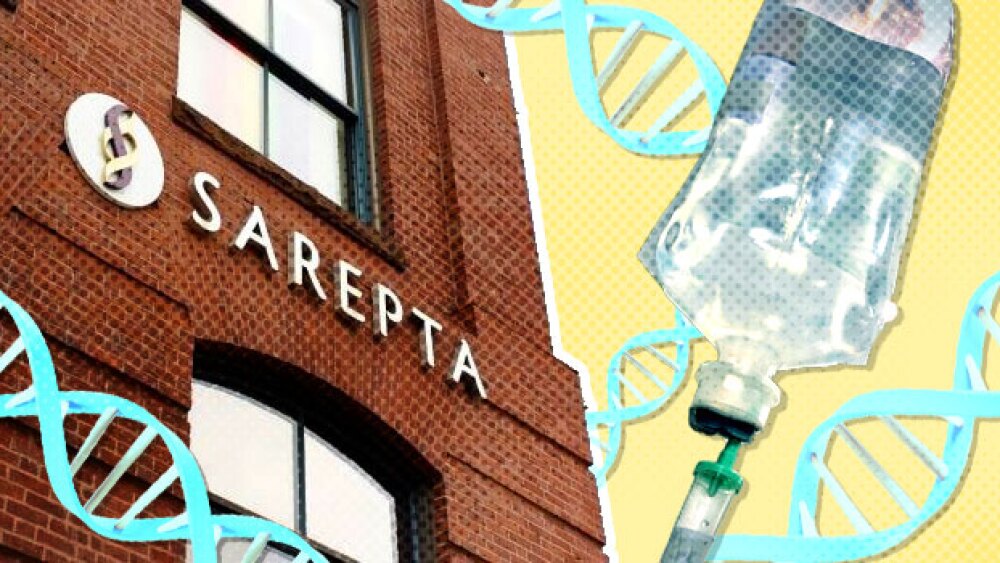Infinity Pharmaceuticals, Inc. today reported an update from its MARIO-3 study of eganelisib in combination with atezolizumab and nab-paclitaxel in front-line metastatic triple negative breast cancer (TNBC) patients.
–Encouraging one-year progression free survival rates in MARIO-3 1L TNBC study regardless of PD-L1 status–
- 52% increase in one-year progression free survival rate in ITT patient population compared to IMpassion130 benchmark -
CAMBRIDGE, Mass.--(BUSINESS WIRE)-- Infinity Pharmaceuticals Inc. (NASDAQ: INFI) (“Infinity” or the “Company”), a clinical-stage biotechnology company developing eganelisib, a first-in-class, oral, immuno-oncology macrophage reprogramming therapeutic, today reported an update from its MARIO-3 study of eganelisib in combination with atezolizumab and nab-paclitaxel in front-line metastatic triple negative breast cancer (TNBC) patients.
“Given our goal of improving long-term patient outcomes, we are particularly pleased to see that the addition of eganelisib to standard of care therapy showed benefit in the one-year progression free survival rate in MARIO-3 regardless of PD-L1 status,” said Robert Ilaria, Jr., MD, Chief Medical Officer of Infinity. “These data reinforce the positive two-year landmark overall survival data from MARIO-275 in 2L urothelial cancer, also regardless of PD-L1 status, and the encouraging PFS observed in checkpoint inhibitor refractory squamous cell cancer of the head and neck in our MARIO-1 study, which all support the potential of eganelisib to improve long term outcomes for patients.”
MARIO-3 mTNBC Updated Data:
- 62 patients were enrolled and evaluable for safety, and 57 patients were evaluable for efficacy, with a median duration of follow-up of 10.0 (8.1,14.2) months. Of the 57 evaluable patients:
- 35 patients (61.4%) had PD-L1(-) tumors
- 18 patients (31.6%) had PD-L1(+) tumors
- 4 patients (7.0%) had tumors of undetermined PD-L1 status
- With an additional year of data maturity since the San Antonio Breast Cancer Symposium 2021, there is now encouraging evidence of a long-term patient progression-free survival (PFS) benefit with improved one-year PFS rates in MARIO-3, including in patients with both PD-L1(+) and PD-L1(-) tumors, compared to the benchmark IMpassion130 study.
|
| ITT | PD-L1 (+) | PD-L1 (-) | |||||||||
|
| MARIO-3 n=57^ | IMpassion130 n=451^^ | MARIO-3 n=18 | IMpassion130 n=185 | MARIO-3 n=35 | IMpassion130 n=266 | ||||||
| One-Year PFS Rate, % (95% CI) | 36.0% (23.7, 49.3) | 23.7% (19.6, 27.9) | 37.5% (16.8, 60.9) | 29.1% (22.2, 36.1) | 34.7% (19.6, 51.6) | NR* | ||||||
| One-Year PFS Rate improvement compared to IMpassion130 | 52% relative improvement | 29% relative improvement | NE** [46% relative improvement compared to IMpassion130 ITT] | |||||||||
| Median duration of follow up, months (95% CI) | 10.0 (8.1, 14.2) | 13.0 (NR*) | 9.9 (5.5, NA) | NR* | 9.3 (5.9, 14.2) | NR* | ||||||
| Data Snapshot: 8 October 2022 | ||||||||||||
| ^4 patients of unknown PD-L1 status | ||||||||||||
| ^^ Schmid et al NEJM 2018 | ||||||||||||
| * NR = Not Reported | ||||||||||||
| **NE = Not Evaluable | ||||||||||||
- Additional data from the MARIO-3 study, by patient population and relative to IMpassion130 benchmarks:
|
| PD-L1 (+) | PD-L1 (-) | |||||||
|
| MARIO-3 n=18 | IMpassion130^ n=185 | MARIO-3 n=35 | IMpassion130^ n=265 | |||||
| CR, % (n)^^ | 16.7 (3) | 10.3 (19) | 5.7 (2) | 4.9 (13) | |||||
| ORR, % (n)^^ | 66.7 (12) | 58.9 (109) | 54.3 (19) | 54.0 (143) | |||||
| mDOR (mos) n (95% CI)^ | 11.7 n=12 (1.8, NA) | 8.5 n=109 (7.3, 9.7) | 7.4 n=19 (3.7, NA) |
NR* | |||||
| mDOR increase compared to IMpassion130 | 3.2 mos (37.6% increase) | NE** | |||||||
| mPFS, mos (95% CI) | 6.4 | 7.5 | 7.3 | 5.6 | |||||
| Data Snapshot: 8 October 2022 | |||||||||
| ^Schmid et al NEJM 2018 with PD-L1(-) data calculated based on ITT and PD-L1(+) data | |||||||||
| ^^ Includes unconfirmed and confirmed responses for MARIO-3 | |||||||||
| *NR = Not Reported | |||||||||
| ** NE = Not Evaluable |
| ||||||||
- No new safety signals were observed during the extended period on treatment, and the MARIO-3 safety profile continued to be consistent with expectations for the three component drugs.
- Most Common Treatment-Related TEAEs in ≥ 10% of All Treated Patients^* (n=62)
| Preferred | Treatment | Treatment-related |
| Fatigue | 30 (48.4) | 4 (6.5) |
| Skin AEs | 29 (46.8) | 7 (11.3) |
| Nausea | 28 (45.2) | 0 (0.0) |
| Hepatic AEs** | 24 (38.7) | 15 (24.2) |
| Diarrhea | 18 (29.0) | 3 (4.8) |
| Alopecia | 16 (25.8) | 0 (0.0) |
| Neutropenia AEs | 16 (25.8) | 9 (14.5) |
| Vomiting | 13(21.0) | 1 (1.6) |
| Pyrexia | 10 (16.1) | 0 (0.0) |
| Peripheral neuropathy | 19 (30.6) | 7 (11.3) |
| Stomatitis | 9 (14.5) | 0 (0.0) |
| Decreased appetite | 8 (12.9) | 0 (0.0) |
| Headache | 8 (12.9) | 0 (0.0) |
| Weight decreased | 7 (11.3) | 1 (1.6) |
| Dysgeusia | 7 (11.3) | 0 (0.0) |
| Constipation | 7 (11.3) | 0 (0.0) |
| Data Snapshot: 23 July 2022 | ||
| Presented in descending order of All Treatment-Related TEAE | ||
| ^ Treatment-related is related to any of the study drugs (eganelisib, atezolizumab, nab-paclitaxel) | ||
| * No treatment-related Grade 5 AEs | ||
| ** One Grade 4 event and no event met Hy’s Law criteria | ||
| Hepatic, skin, neutropenia, and peripheral neuropathy represent grouped preferred terms. | ||
- Treatment Discontinuation:
74% of patients were able to remain on treatment with the MARIO-3 TNBC triplet regimen compared to 81% of patients with the IMpassion130 doublet.
|
| MARIO-3 | IMpassion130*
Atezo+Nab-Pac | ||
| (n=62), | n (%) | (n=460), | n (%) | |
| All-causality AEs |
|
|
|
|
| Any grade | 61 | (98.4) | 457 | (99.3) |
| Grade 3 or 4 | 41 | (66.1) | 233 | (50.7) |
| Grade 5 | 5 | (8.1) | 6 | (1.3) |
| Serious AEs | 22 | (35.5) | 110 | (23.9) |
| AE leading to any drug withdraw | 16 | (25.8) | 88 | (19.1) |
| AE leading to Atezo withdraw | 14 | (22.6) | 37 | (8.0) |
| AE leading to Nab-Pac withdraw | 11 | (17.7) | 85 | (18.5) |
| Treatment-related AEs** |
|
|
|
|
| Any grade | 60 | (96.8) | 444 | (96.5) |
| Grade 3 or 4 | 42 | (67.7) | 191 | (41.5) |
| Grade 5 | 0 | (0.0) | 2 | (0.4) |
| Serious AEs | 9 | (14.5) | 58 | (12.6) |
| Data Snapshot: 23 July 2022 | ||||
| * Emens et al., Annal of Oncology 2021 | ||||
| ** MARIO-3 data listed are for TEAEs related to any study drug | ||||
About Infinity and Eganelisib
Infinity Pharmaceuticals, Inc. (“Infinity” or the “Company”), is a clinical-stage biotechnology company developing eganelisib (IPI-549), a first-in-class, oral, immuno-oncology macrophage reprogramming therapeutic which is designed to address a fundamental biologic mechanism of immune suppression in cancer in multiple clinical studies. MARIO-3 is the first eganelisib combination study in front-line advanced cancer patients and is evaluating eganelisib in combination with Tecentriq® and Abraxane® in front-line TNBC and in combination with Tecentriq and Avastin® in front-line RCC. MARIO-275 is a randomized, controlled combination study of eganelisib combined with Opdivo® in I/O naïve urothelial cancer. For more information on Infinity, please refer to Infinity’s website at www.infi.com.
Cautionary Note Regarding Forward-Looking Statements
This press release contains forward-looking statements within the meaning of The Private Securities Litigation Reform Act of 1995. Such forward-looking statements include the Company’s guidance with respect to the therapeutic potential of eganelisib and the Company’s ability to execute on its strategic plans. Such statements are subject to numerous important factors, risks and uncertainties that may cause actual events or results to differ materially from the Company’s current expectations. For example, there can be no guarantee that eganelisib will successfully complete necessary preclinical and clinical development phases or will be successful in establishing a strategic partnership to further the development of eganelisib. Further, there can be no guarantee that any positive developments in Infinity’s product portfolio will result in stock price appreciation. Management’s expectations and, therefore, any forward-looking statements in this press release could also be affected by risks and uncertainties relating to a number of other factors, including the following: results of clinical trials and preclinical studies, including subsequent analysis of existing data and new data received from ongoing and future studies; the cost, timing and results of clinical trials; the content and timing of decisions made by the U.S. FDA and other regulatory authorities; Infinity’s ability to obtain and maintain requisite regulatory approvals; unplanned cash requirements and expenditures; development of agents by Infinity’s competitors for diseases in which Infinity is currently developing or intends to develop eganelisib; and Infinity’s ability to obtain, maintain and enforce patent and other intellectual property protection for eganelisib. These and other risks which may impact management’s expectations are described in greater detail under the caption “Risk Factors” included in Infinity’s annual report and quarterly reports filed with the Securities and Exchange Commission (SEC), and in other filings that Infinity makes with the SEC, available through the Company’s website at www.infi.com. Any forward-looking statements contained in this press release speak only as of the date hereof, and Infinity does not undertake and expressly disclaims any obligation to update any forward-looking statements, whether as a result of new information, future events or otherwise.
Opdivo® is a registered trademark of Bristol Myers Squibb.
Tecentriq® is a registered trademark of Genentech, Inc.
Abraxane® is a registered trademark of Abraxis BioScience, LLC., a wholly owned subsidiary of Bristol Myers Squibb Company.
Avastin® is a registered trademark of Genentech, Inc.
View source version on businesswire.com: https://www.businesswire.com/news/home/20221114005336/en/
Source: Infinity Pharmaceuticals, Inc.





